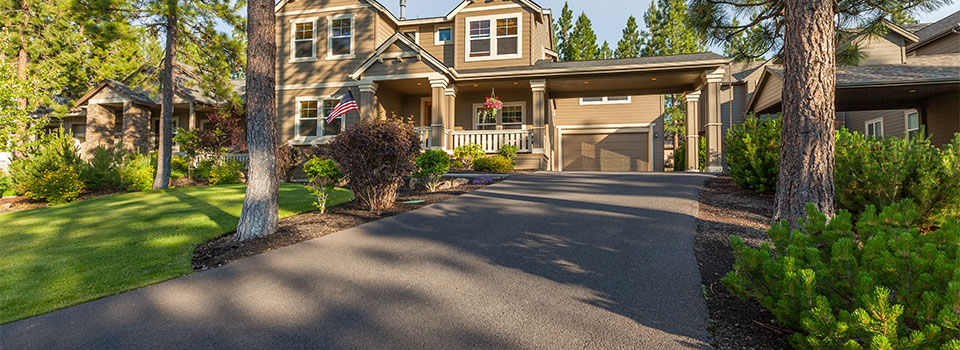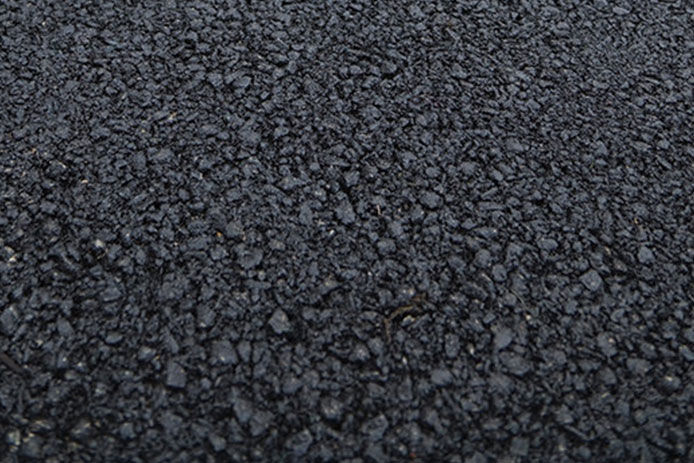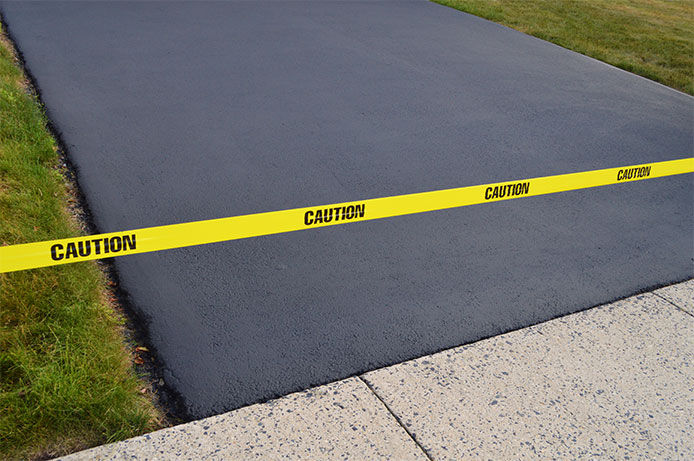Driveway resurfacer usually needs 3-5 days to cure. Keeping the driveway completely dry and clear during this time is ideal. Avoid walking on the surface for at least 24 hours, but staying off the asphalt for about three days is best.
Don't drive on your new asphalt for at least three days (preferably five) to give the driveway time to cure and set. Once the driveway has been properly set, you can use it as usual.
After six months, pour an asphalt sealant over the surface of your driveway. The sealant will protect your new asphalt, ensuring it holds up to weather and more. You'll likely need to have your driveway resealed every 2-3 years to prevent cracks and keep your driveway looking fresh. With proper care, your asphalt driveway will last many years.
Driveway Sealing Vs. Resurfacing
You may be wondering about seal coating and if you should opt for that instead of resurfacing. Seal coating is a preventative measure that can help restore the color of your asphalt, protect it from the sun and fill in minor imperfections. Basically, it seals the top of the driveway but doesn’t repair any damage.
On the other hand, resurfacing means adding a new layer of asphalt over the existing coat. This typically adds about 1"-2" of asphalt to the driveway surface and can help you correct any structural damage. You'll also want to fill in any holes or cracks before resurfacing.
When you choose an asphalt resurfacing material, you'll need to know the square foot measurement of your driveway so you can purchase enough of the asphalt repair material. You'll also want to be aware of the number of small cracks and minor damage to get enough of the crack filler. The average cost of DIY asphalt replacement depends on the square feet and the extent of repairs needed.
Driveway Resurfacing Tips
Here are some tips to help make the driveway resurfacing process easier.
Once the whole driveway is coated, stake off the driveway with string or tape to keep everyone off the surface.
Make sure no rain is in the forecast and don’t drive or walk on the asphalt for at least 72 hours.
Be sure to read the manufacturer’s directions and recommendations on the asphalt resurfacer spread rate and number of coats.
It's helpful to wear old shoes and clothing while resurfacing your driveway. Choose items you won't mind throwing away afterward.
Work on a cooler day. It will slow the dry time and make sure you have more time to spread the material smoothly. Early summer is the best season but watch for a rain-free week.
If your asphalt is showing signs of significant settling or age, it may be best to contact a local professional for assessment before you attempt to DIY.
If you're wondering how to give your driveway a facelift, asphalt resurfacing is a project you can tackle on a weekend. It can improve the look and comfort of your home. When you resurface your driveway yourself, you'll extend the life of your driveway and avoid the cost of a full replacement.
Do it Best has all the supplies you need for driveway resurfacing and any other home projects. Stop by our stores, or shop online today!
With three DIY steps, your driveway will be looking brand new! Be the envy of your neighbors and get your driveway back to tip-top shape.
Asphalt Resurfacing FAQs
How Long Does It Take To Resurface an Asphalt Driveway?
Resurfacing an asphalt driveway typically takes about one to two days, depending on the size and condition of the driveway, as well as weather conditions. Drying time can vary, but generally, the driveway will be ready for light use within 24 to 48 hours. For optimal results, it's important to avoid heavy traffic on the newly resurfaced driveway for at least a few days.
How Much Does It Cost to Resurface a Driveway?
The cost to resurface a driveway varies based on factors such as the size of the driveway and the type of materials used. On average, homeowners can expect to pay between $1 to $3 per square foot for basic asphalt resurfacing. This means that for a standard 600 square foot driveway, the cost would range from $600 to $1,800.
Can you Put a Layer of Asphalt Over Old Asphalt?
Yes, you can put a layer of asphalt over old asphalt, a process known as overlaying, which is an alternative to complete asphalt resurfacing. While resurfacing involves removing the top layer of asphalt and replacing it with a new one, overlaying adds a new layer directly on top of the existing asphalt. Overlaying is generally quicker and less expensive than resurfacing because it requires less labor and materials. However, for driveways with extensive structural damage, resurfacing might be the better option to ensure long-term durability. Consulting with a professional at Do it Best can help determine whether overlaying or resurfacing is more appropriate for your specific situation.












